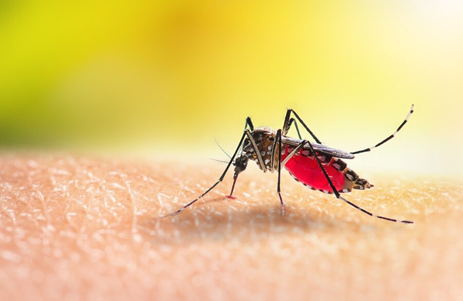It is also known as break-bone fever, is a mosquito-borne viral infection widespread in tropical and subtropical regions worldwide. While many cases of dengue are mild or asymptomatic, severe forms of the disease can lead to hospitalization and, in some instances, can be life-threatening. Early detection and prevention of mosquito bites, particularly during the daytime, are key to managing and lowering the risk of dengue.
Transmission and Risk Factors
It transmitted through the bites of infected female Aedes aegypti mosquitoes, which is responsible for the spread of virus. After biting an infected person, the virus incubates within the mosquito for about 8-12 days before it can be transmitted to other humans. Factors such as urbanization, climate change, and increased population movement contribute to the growing spread and risk of dengue.
Symptoms and Treatment
Symptoms of dengue typically appear 4–10 days after infection and may include:
- High fever
- Severe headache
- Pain behind the eyes
- Muscle and joint pain
- Nausea
- Vomiting
- Swollen glands
- Rash
In severe cases, additional symptoms such as persistent vomiting, severe abdominal pain, and rapid breathing may occur. Treatment mainly involves staying hydrated, managing pain, and avoiding NSAIDs due to the risk of bleeding.
Diagnostics and Surveillance
Accurate diagnosis is essential for effective dengue management and control, based on clinical symptoms and confirmed through laboratory tests such as PCR (polymerase chain reaction) and NS1 antigen tests, which are most effective when conducted within the first week of illness. Enhanced surveillance systems are crucial for tracking the spread and intensity of outbreaks, helping to guide public health interventions. The WHO collaborates with global laboratories to strengthen diagnostic capabilities and improve reporting systems, enabling timely and effective responses to dengue outbreaks worldwide.
Prevention and Control
Preventing dengue focuses on minimizing exposure to mosquitoes by wearing covered clothing, using mosquito nets, and applying repellents containing DEET or Picaridin. Environmental management, such as eliminating standing water where mosquitoes breed, is also effective. Community involvement in vector control and personal protective measures is vital in reducing the incidence of dengue.
Dengue is a preventable disease, but it requires awareness and action. By prioritizing mosquito control, recognizing the signs of infection, and seeking prompt medical care, we can reduce the threat of dengue and promote a healthier environment for all
Stay vigilant and protect yourself from mosquito bites to reduce your risk of dengue.

